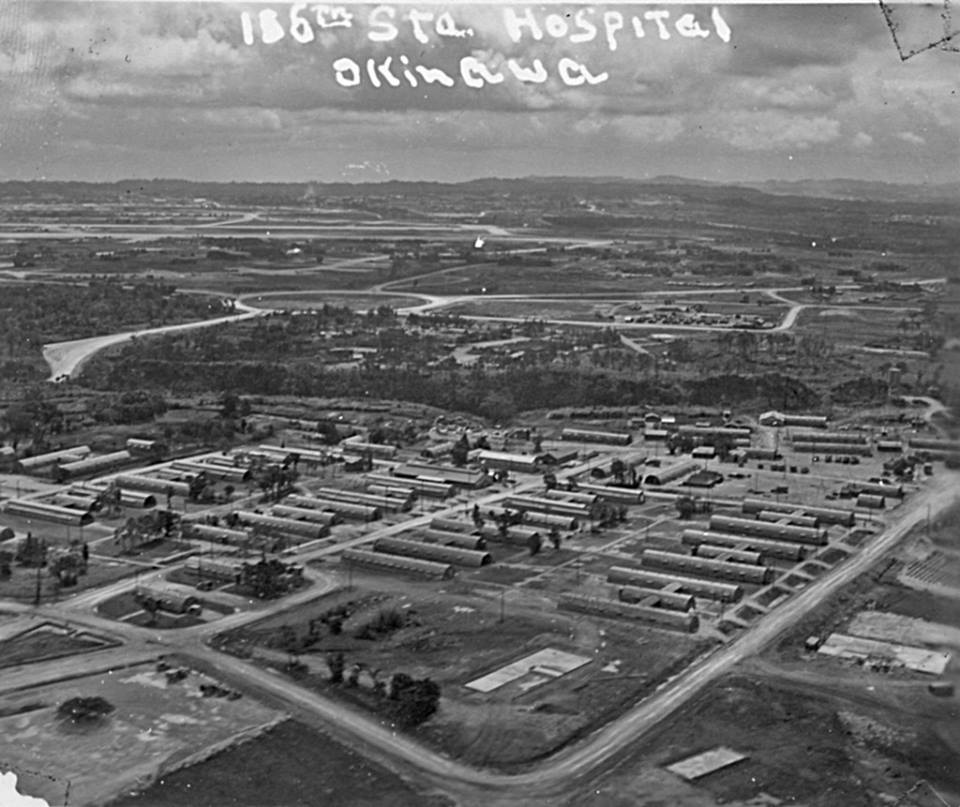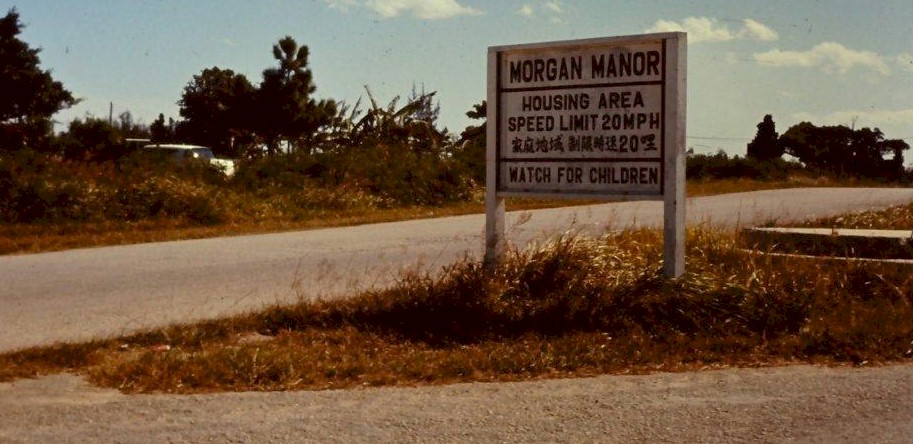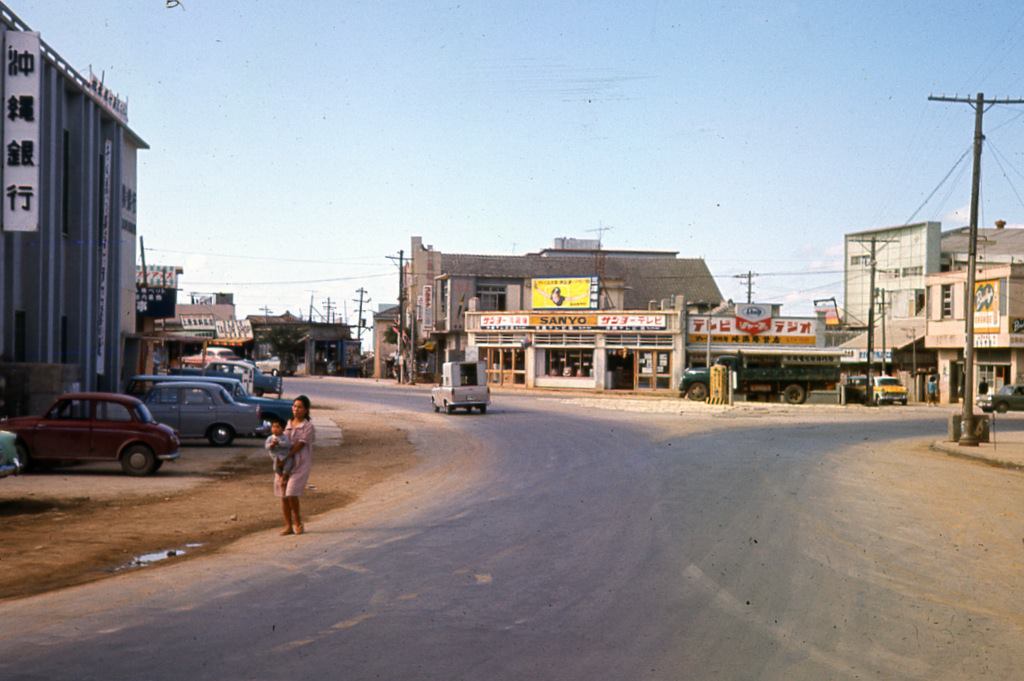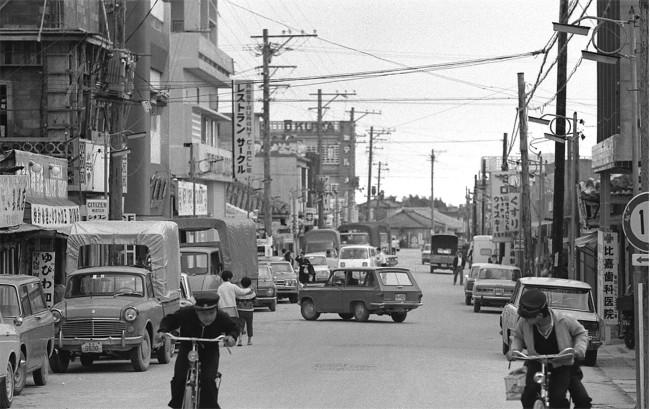
Kadena Circle, 1945 (photo credit unknown) photo provided by Donn Cuson
In 1945, during the Battle for Okinawa, military suppliers realized that what roadways existed on the island were far too inadequate to meet the needs of operations, especially in the south. Construction materials were rather sparce but the equipment and limited supplies brought on island by the Seabees to support Operation Iceberg were at least adequate for rudimentary road-building.
The 130th Seabee Btn went to work on the construction of a traffic circle near Kadena Airfield.
(1) In all that I've read I haven't found any resource that pins down the date that the circle became operational but it looks like it may not have been completed until June. Combat operations ceased in mid-June.
Although ample supplies had been behind the lines of June 1, the combat troops had advanced, and the heavy rain which fell all during the month made the roads to the rear impassable. A new and complete supply system had to be quickly devised. As overland transportation was impossible, the burden of supplying troops at the south end of the island had to be shifted to the lighterage used in normal unloading operations. To meet the emergency, cargo ships were spotted at dispersed anchorages and selectively discharged. Supplies were unloaded at every possible landing beach near the troops. Lighterage, after being unloaded on the beach, was used to evacuate casualties and natives caught in the path of advancing troops. Despite the huge burden of extra supply, 613,200 tons of supplies were unloaded during the month of June.On July 1, the demands of the tactical forces diminished. Selective discharge of ships was no longer necessary. By July 17, the unloading rate had been increased to 35,000 tons per day. This was an increase of 15,000 tons a day over June. During July, 1,015,374 tons of freight were discharged and 206,000 tons loaded out. All of this freight was handled twice, from ships to lighters and from lighters to trucks on the beaches. In contrast, the original base development plan called for the handling of 550,000 tons per month over completed ship piers and permanent installations.
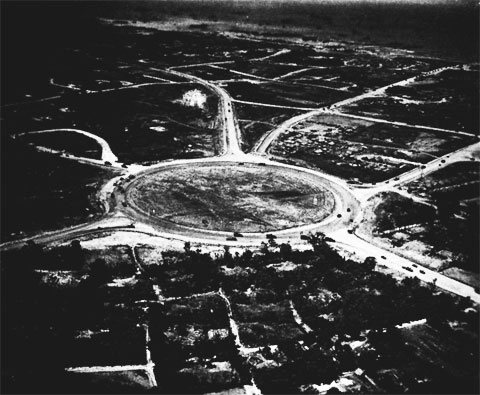
Seabee units comprising Joint Freight Handling Facilities consisted of the 3rd, 4th, 11th, 12th, 23rd, 27th, and 36th Special Battalions, the 81st, 28th, and 148th (Pontoon) Battalions, and the 137thy and 139th (Trucking) Battalions. On July 31, both Army and Navy resumed responsibility for its own unloading, and Joint Freight Handling Facilities ceased to exist as of that date. Naval personnel were reorganized to form the 12th Naval Construction Brigade. The first major shipment of construction materials -- 15,900 measurement tons -- arrived on Okinawa on May 21. Until the arrival of these materials, construction projects were limited to those which could be accomplished through the use of native materials or of the small supplies of general construction material brought to Okinawa as a part of battalion allowances.
Major construction projects completed by the Seabees during the combat period included three airstrips at Yontan field, the Third Amphibious Corps evacuation hospital at Yontan, Special Augmented Hospital 6, a traffic circle near Kadena Field, and pontoon piers at Kuba Saki, Machinato, Awase, and Bisha Gawa. Major construction projects begun by Seabees during that same period included airstrips at Bolo, Awase, and Chimu, a seaplane base at Katchin Hanto, six highways, Special Augmented Hospital 7 and 8, a fuel pier and a pontoon pier at Katchin Hanto, a breakwater at Tengan, an ammunition depot at Chimu Wan, a section base at Katchin Hanto, a minecraft storm refuge at Unten Ko, a receiving station at Kuba Saki, boat pool facilities at Bisha Gawa, a degaussing station at Tsuken Shima, and a joint communications center. (1)
Side Story: According to this account by Joe Browning, "Life on Okinawa" August 1963 issue:
"... a short distance up the highway (Highway 1 / Rte 58) we find the Kadena traffic circle. Added just after the war, this military designed addition to Kadena Village leaves many people wondering why Okinawa doesn't have more of these efficient traffic-handling devices."To be exactly truthful, when this circle was carved from the rubble of war, it was not some far-sighted engineer's contribution to the future generations of motorists. In fact, it could almost be called an accident.
"U.S. Army engineers surveying Highway 1 ran into a problem when they reached Kadena. The ruins of the village had been bulldozed into a huge pile of rubble, and this pile of rubble was located right in the path of what was to be the new Highway 1. But the crew chief had a simple solution - build a traffic circle around the rubble. And they did."
The traffic circle was located west of Kadena Airfield and was along Route 1 (the present-day Route 58). By mid-August of 1945 as many as 20,000 vehicles used the traffic circle daily. (1) 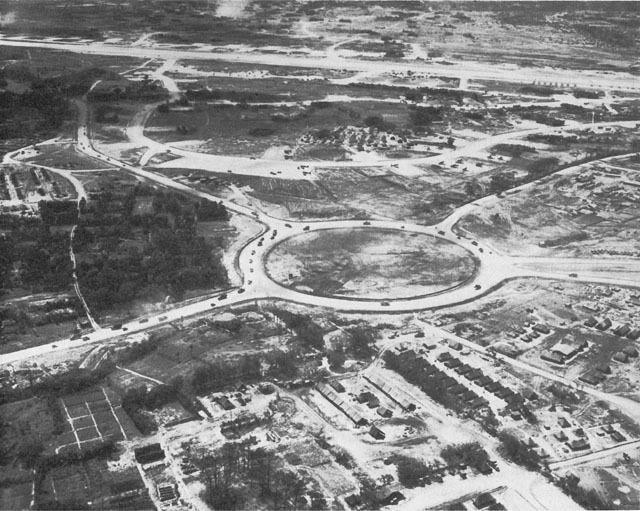
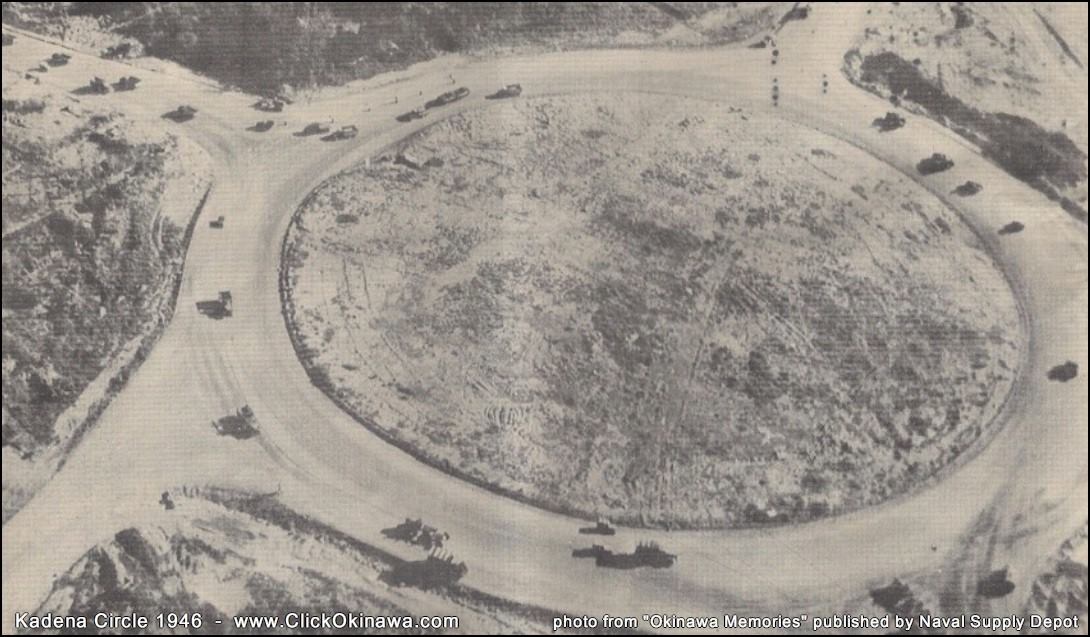
Kadena Circle in 1946 (photo courtesy of "Okinawa Memories, Naval Supply Depot")The 156th Station Hospital was located across the river northwest of Kadena Circle in 1945-46. Soon after the war the hospital was deactivated and the quonset huts were converted to family housing for U.S. military personnel. The housing project was known as Morgan Manor.
In the following two photos you can see where the hospital was and then you can see the same area as a housing area. Fascinating transformation!
The following are some photos that I took in the Morgan Manor area, March 21, 2014. It is apparent that this is no longer a U. S. military housing compound. The real estate was turned back over to the Okinawans and the housing units are now occupied by the local residents. A retired American man with whom I became friends when I visited the island in 2014 bought and lives in one of these houses. Right, Michael?
View of the 156th Station Hospital (photo source is unknown). Thanks, Donn, for providing the photo!
To the upper left, beyond the hospital quonsets, you can see Kadena Circle over across the river.In the next photo, taken from a different angle (almost 180 degrees), you see the housing area. Morgan Manor consisted of more than the quonsets. There were also concrete block houses and I'm not sure where those are located in the aerial photo. If you know, email me: Mick-Admin@ClickOkinawa.com
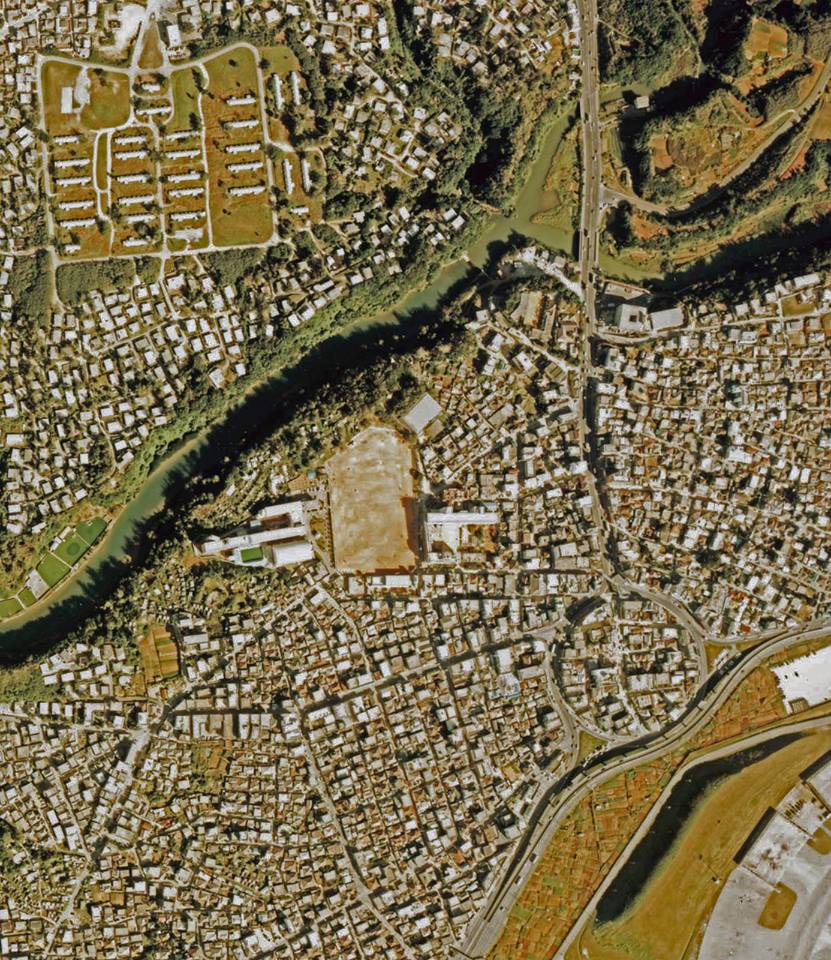
Aerial view, 1977. Photo source: unknown
Leaving the circle into Morgan Manor housing (Photo from 1961-63 by Gene Jones)
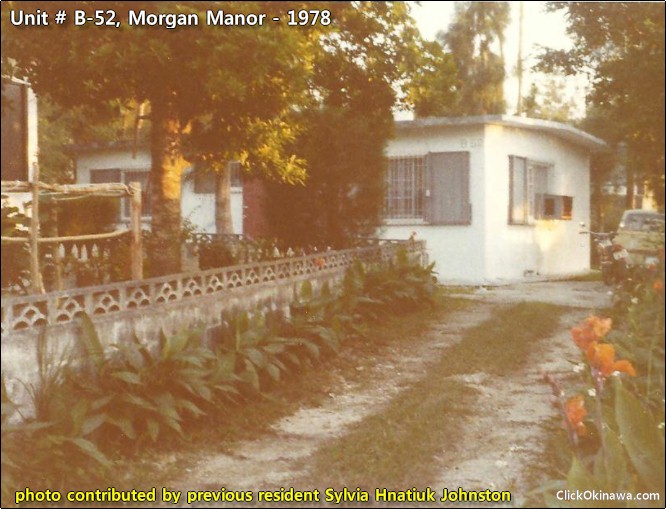
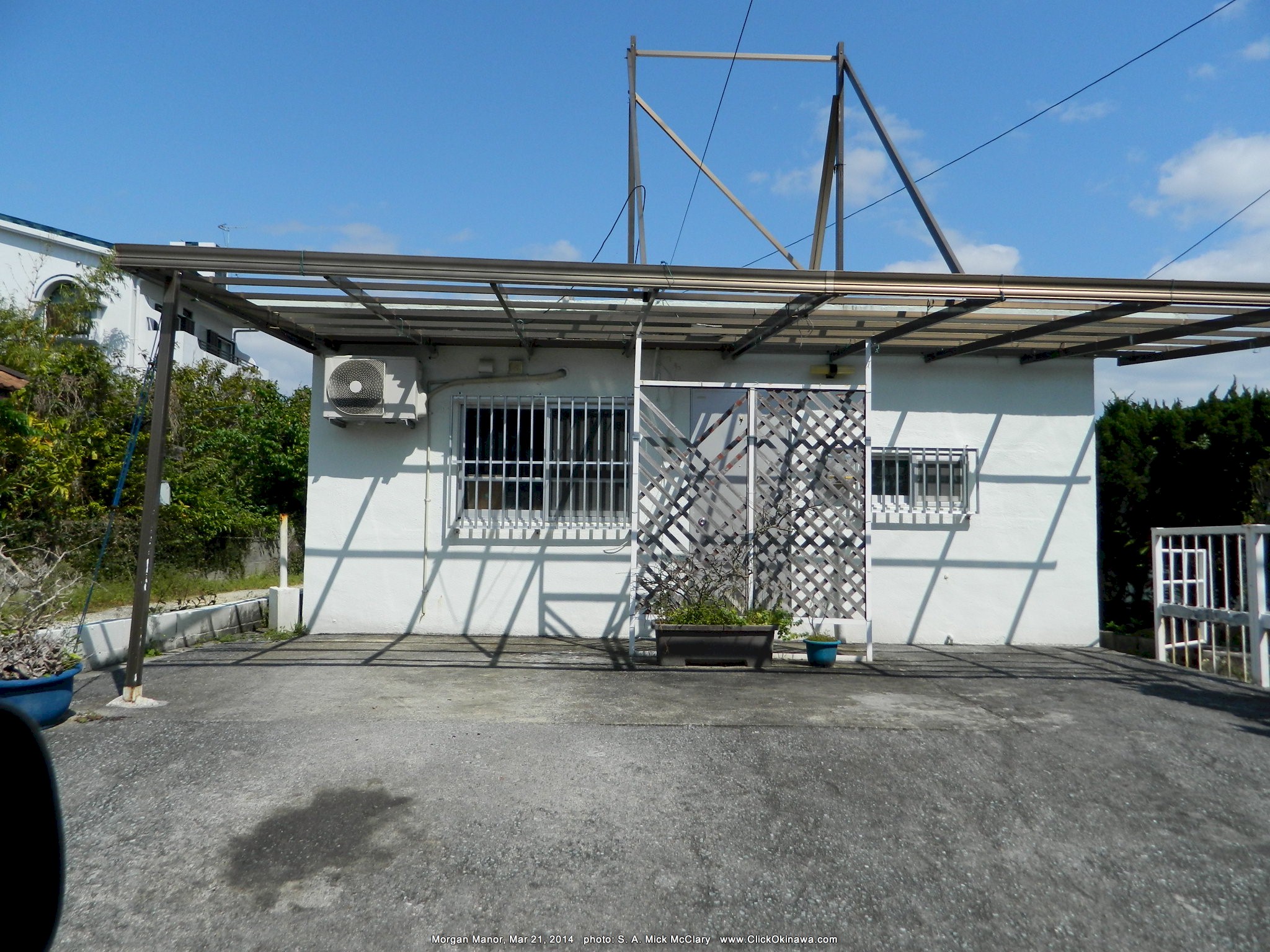
Over the years, the area became developed with retail establishments, service areas, restaurants and apartment houses. By the 1960s it was a well-established shopping and entertainment area
Kadena Circle in 1964 (Photo source unknown) - sent to me by Donn Cuson
Kadena Circle in 1969. (Photo courtesy of Jeff Johnston CWO3 USNR Ret.)A friend, Janis, lived in the Kadena Circle area, "three houses up from the Seawall blocks down from the Higa Store (school bus stop) about 8 months from 67-68. I always went shopping and eating at least once a week (at a business located in Kadena Circle). Love the stationery type store there for colored pencils and origami paper - all those fun things. The Chinese place to eat was just always fun. To walk around checking out all the shops. Good times even though, for a 10 year old girl, living across from tombs was a bit nightmarish.
I can still see myself standing in my yard with my best friend and protector Lady and yelling Bireleys Man is here!!!!"
Recent Google satellite photo of Kadena RotaryThese are some photos that I took one evening when I walked around the Circle. This was March 11, 2014. I had driven through it numerous times but was still "unfulfilled" with regard to actually seeing and feeling what was in the circle. The most amazing changes since I left there in 1990 was to see, in 2014, that a huge portion of the circle area is now occupied by government offices, large buildings and a huge parking lot. "Huge" meaning, for Okinawa, taking up a lot of valuable real estate!!
Family Mart was one of my favorite stop-off places at night when hunger struck. Excellent bento and, of course, copious quantities and varieties of ice tea or coffee.
References:1. ibiblio.org - building bases
photo credits accompany the photos throughout the page
